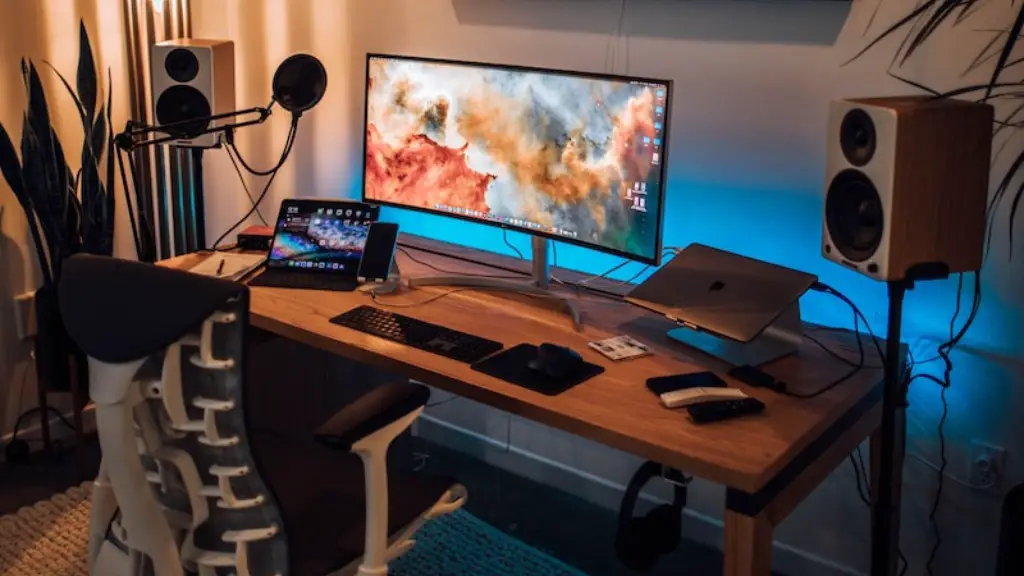The question of how much a gaming monitor should cost is a difficult one to answer. It depends on the gamer’s needs, budget and other factors. Generally, a gaming monitor should cost between $80 and $800, depending on the size, resolution, refresh rate and other features. Those looking for the best gaming experience will want to invest in a more expensive monitor with higher resolution capabilities, larger screen size and faster refresh rate.
Choosing the right gaming monitor can be difficult. To ensure the best performance, gamers should prioritize the monitor’s specifications over the price. Resolution, refresh rate, size, response time and brightness are all necessary considerations. If the monitor is too expensive, gamers should look for ways to reduce the cost. Setting a budget, researching which monitors offer the best performance within the budget, and comparing prices between different retailers, are all effective strategies that can save money.
Another factor to consider when shopping for a gaming monitor is the type of connection. Some of the most popular options are DisplayPort, HDMI, and DVI. DisplayPort offers the highest resolutions and refresh rates, while HDMI is best suited for smaller screens with lower resolutions. DVI is the oldest option, but it is still widely used in gaming. It can provide slightly better graphics quality than HDMI, depending on the resolution.
Although some gamers may opt for the most expensive gaming monitors on the market, it is also possible to get good performance from cheaper options. Many budget gaming monitors offer excellent features at an affordable price. They may lack features such as refresh rate, but they can still provide a great gaming experience.
A good gaming monitor should offer fast response time, high refresh rate, decent resolution, and good color saturation. Gamers should also look for a monitor with low input lag, which is the time it takes for the screen to react to input from the keyboard or controller. Lower costs can be achieved by compromising on certain features, such as response time, refresh rate, and resolution.
Resolution
When buying a gaming monitor, the resolution of the display should be taken into consideration. Higher resolutions offer a clearer picture and better viewing experience. The most popular resolutions for gaming include Full HD (1920 x 1080), Quad HD (2560 x 1440), and 4K (3840 x 2160). These options can be expensive, with some 4K monitors starting at close to $1,000. However, many gamers settle for 1080p or 1440p resolution monitors, as they offer a good balance of performance and affordability.
Refresh Rate
The refresh rate of a monitor determines how often the image is refreshed on the screen. Monitors with higher refresh rates offer a better gaming experience. Usually, the higher the refresh rate, the higher the cost. Monitors with 144hz refresh rates often cost more than monitors with 60hz lower refresh rates. To decide which is best, gamers should factor in their budget and consider the types of games they play.
Size
The size of the monitor is also important. Monitors with larger screens provide a more immersive experience and give gamers more screen real estate. However, larger monitors can be costly, whereas smaller screens are more affordable. Gamers should consider their space constraints as well as their budget when selecting a gaming monitor.
Response Time
Response time is an important factor in gaming monitors. It is the speed in which the pixels can change from one color to another. The higher the response time, the slower the monitor will be. Monitors with a higher response time offer better visuals but are often more expensive. Lower response times offer a smoother experience but do not provide the same level of visuals.
Brightness
Gamers should also consider the brightness of the monitor when selecting one for gaming. Brighter monitors improve the viewing experience and can make for better gaming. However, higher brightness levels can also lead to higher power consumption, which can drive up the cost.
Connectivity
Finally, it’s important to consider the type of connector used by the monitor. Some of the most popular connections are DisplayPort, HDMI, and DVI. DisplayPort offers the highest resolution, but it is also the most expensive. HDMI is best used for smaller resolutions and is the most popular connection for gaming. DVI is the oldest connection type but still offers decent image quality. It is often cheaper than DisplayPort or HDMI.
